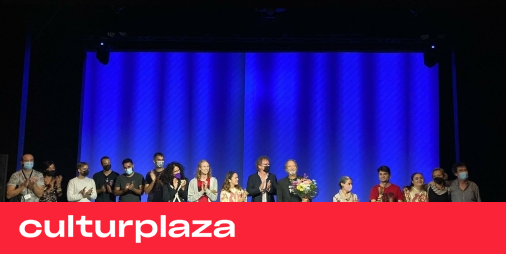VALENCIA (EP). The Museum of Sciences of Valencia combines theater and science in Ramona and Cajal. The secret of the Museum, the first scientific musical in Spain that seeks to “change the viewer’s gaze on science” and encourages women to look at women scientists with “other eyes” because “they have almost always remained invisible” in this world, despite the fact that many of them changed questions key.
The show, which is included in the entrance to the Museum and a session can be booked at the info point on the first floor, is “a fun musical performance” in which two young people live endless adventures during a night at the Museum, looking for a secret hidden inside, through a staging with original songs, animations and audiovisual effects.
The director of the show, Juan Luis Mira, the general director of the Ciutat de les Arts i les Ciències, Enrique Vidal, and the regional secretary of Tourism and president of the Board of Directors of Cacsa, Francesc Colomer, have offered this Monday in a conference press details of the play, which will be performed from October 28, on Thursdays and Sundays at 11:00 and 12:30, Saturdays at 4:00 and 17:30. The next holiday, Monday, November 1, the session will be at 4:00 p.m.
The protagonists meet the “most important” people in the history of science, have “interesting and different” dialogues with museum objects, sing the universal gravitation rap with Newton’s apple, and are surprised to hear Einstein rapping about the secrets of space and time or meet Hagnódice, “the first scientist who changed the world of medicine.”
Other characters appear during this adventure “to open our eyes to the most relevant moments in science.” The story of astronomy told by a telescope, Newton’s own apple or even Stephen Hawking’s wheelchair help the two protagonists in their search.
This work, which the director considers his “small tribute to the scientist Nikola Tesla”, has been created exclusively for the Ciutat de les Arts i les Ciències, in collaboration with the Master in Applied Dramatic Art of the University of Alicante, with its director academic, John Sanderson, leading the production. Along these lines, he has indicated that what is intended is “to change the viewer’s gaze on science” and to look at women scientists with “other eyes” because “they have almost always remained invisible” despite their role in this matter, he pointed out. to Europa Press.
“Science and the arts form a whole”
In his speech, Enrique Vidal stressed that “science and the arts form a whole and are not opposed, as on this same floor of the Museum it is evident in the exhibition ‘Play. Science and Music”. “With ‘Ramona y Cajal. The Museum’s secret’ we again address this link between science and literature, and we offer a quality proposal, which combines scientific dissemination with theater, for all audiences”, he indicated.
For his part, one of the actors who plays Cajal, Adrià Lerma, explained that there are several interpreters who play each of the roles, in addition to the scientists who appear on stage with whom the protagonists interact throughout the show. . “The idea is not that they leave here with a lot of information in their heads, but that they have fun with something that has to do with science and that they go home wondering things about life; that they realize that everything what surrounds us is wonderful and that we can discover more about it, “he explained.
In this sense, the actress who represents Ramona, Gema Cuevas, has valued how “innovative” the project is, since it transmits knowledge in a way “that will reach many people”. “Much more has come than if the teacher explained it to you in a class. He has a lot of information that you may not take all of it, because there are many things that go very fast, but you have the thorn to say this that he said no I have found out very well I am going to find out what it means “.
In addition, it has influenced the idea of introducing women into the scientific field because “although we have been repressed, there have always been women who looked to the future and fought for all of us.” Finally, the creator of the work has thanked that “for the first time a museum in Spain has opted for the theater to create productions that bring science closer to the public”. “Hopefully there are many more museums that realize that the theater is a wonderful educational vehicle,” he concluded.
– .


